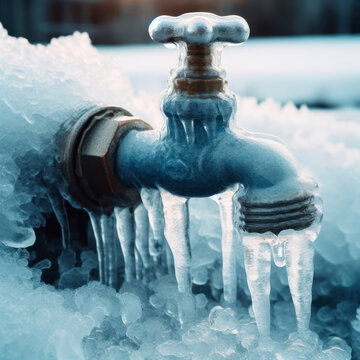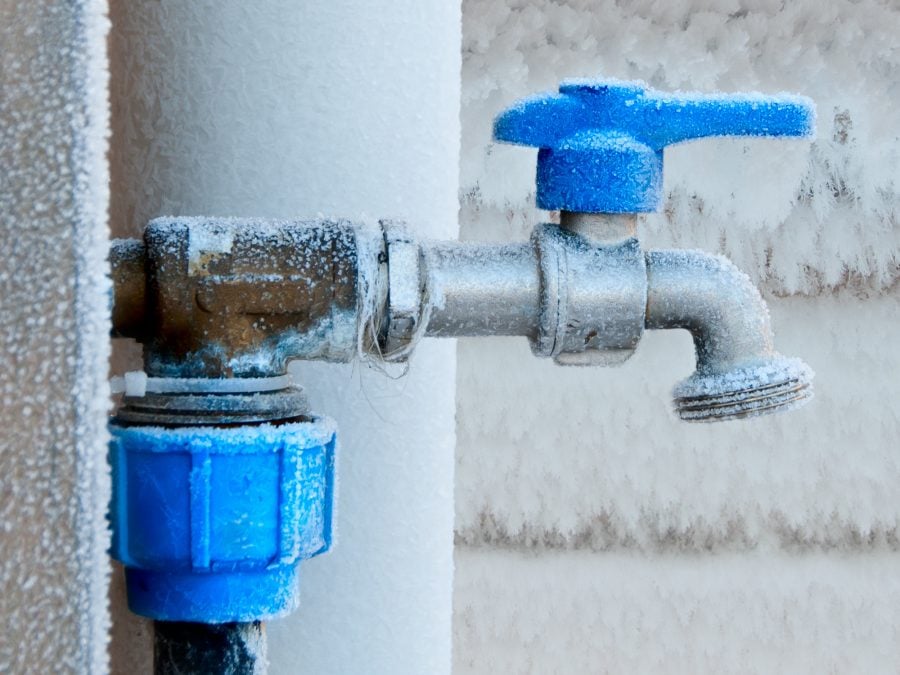Crucial Advice for Preventing Frozen Plumbing in Cold Weather Conditions
Crucial Advice for Preventing Frozen Plumbing in Cold Weather Conditions
Blog Article
The article author is making several great pointers relating to How to Prevent Your Pipes From Freezing in general in this great article following next.

Winter can ruin your plumbing, particularly by freezing pipes. Right here's exactly how to stop it from taking place and what to do if it does.
Introduction
As temperatures decline, the risk of icy pipes rises, potentially leading to costly repairs and water damages. Comprehending exactly how to stop icy pipes is important for home owners in chilly climates.
Avoidance Tips
Protecting at risk pipelines
Cover pipes in insulation sleeves or use warm tape to protect them from freezing temperatures. Focus on pipelines in unheated or outside areas of the home.
Heating techniques
Keep interior rooms effectively heated up, especially locations with plumbing. Open cabinet doors to permit cozy air to flow around pipes under sinks.
Exactly how to identify icy pipes
Seek lowered water flow from faucets, uncommon smells or noises from pipelines, and noticeable frost on exposed pipes.
Long-Term Solutions
Architectural changes
Consider rerouting pipes far from exterior walls or unheated areas. Add additional insulation to attic rooms, cellars, and crawl spaces.
Updating insulation
Buy premium insulation for pipelines, attic rooms, and walls. Proper insulation helps keep constant temperatures and reduces the danger of frozen pipes.
Shielding Outdoor Pipes
Garden hose pipes and exterior taps
Separate and drain garden tubes before wintertime. Mount frost-proof spigots or cover outside taps with protected caps.
Recognizing Frozen Pipes
What creates pipes to ice up?
Pipelines freeze when exposed to temperature levels listed below 32 ° F (0 ° C) for prolonged periods. As water inside the pipelines freezes, it broadens, putting pressure on the pipe walls and possibly triggering them to break.
Threats and problems
Icy pipes can lead to water disturbances, property damages, and costly repairs. Ruptured pipes can flooding homes and trigger substantial architectural damages.
Signs of Frozen Piping
Determining frozen pipes early can avoid them from breaking.
What to Do If Your Pipes Freeze
Immediate actions to take
If you think frozen pipelines, maintain faucets available to alleviate stress as the ice melts. Use a hairdryer or towels taken in hot water to thaw pipelines slowly.
Final thought
Avoiding icy pipes calls for proactive procedures and quick reactions. By recognizing the causes, indications, and safety nets, property owners can shield their plumbing during winter.
5 Ways to Prevent Frozen Pipes
Drain Outdoor Faucets and Disconnect Hoses
First, close the shut-off valve that controls the flow of water in the pipe to your outdoor faucet. Then, head outside to disconnect and drain your hose and open the outdoor faucet to allow the water to completely drain out of the line. Turn off the faucet when done. Finally, head back to the shut-off valve and drain the remaining water inside the pipe into a bucket or container. Additionally, if you have a home irrigation system, you should consider hiring an expert to clear the system of water each year.
Insulate Pipes
One of the best and most cost-effective methods for preventing frozen water pipes is to wrap your pipes with insulation. This is especially important for areas in your home that aren’t exposed to heat, such as an attic. We suggest using foam sleeves, which can typically be found at your local hardware store.
Keep Heat Running at 65
Your pipes are located inside your walls, and the temperature there is much colder than the rest of the house. To prevent your pipes from freezing, The Insurance Information Institute suggests that you keep your home heated to at least 65 degrees, even when traveling. You may want to invest in smart devices that can keep an eye on the temperature in your home while you’re away.
Leave Water Dripping
Moving water — even a small trickle — can prevent ice from forming inside your pipes. When freezing temps are imminent, start a drip of water from all faucets that serve exposed pipes. Leaving a few faucets running will also help relieve pressure inside the pipes and help prevent a rupture if the water inside freezes.
Open Cupboard Doors
Warm your kitchen and bathroom pipes by opening cupboards and vanities. You should also leave your interior doors ajar to help warm air circulate evenly throughout your home.

As a devoted person who reads on Winter Plumbing Precautions: Preventing Frozen Pipes, I imagined sharing that excerpt was really helpful. Sharing is nice. Helping people is fun. We love reading our article about Prevent Frozen Pipes .
Call Today Report this page